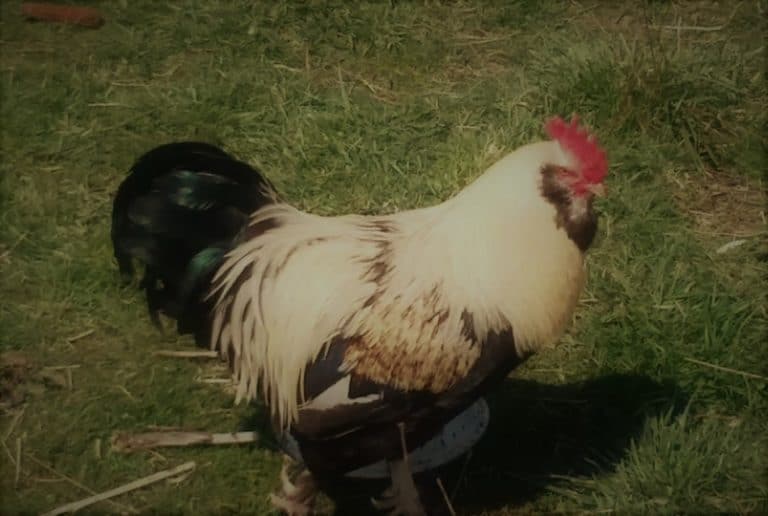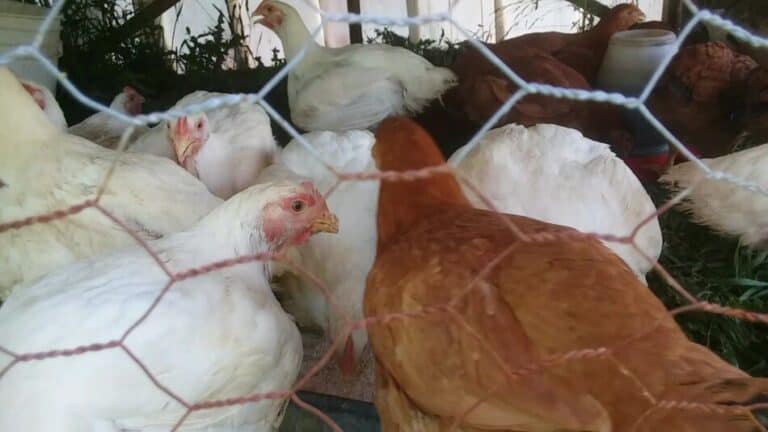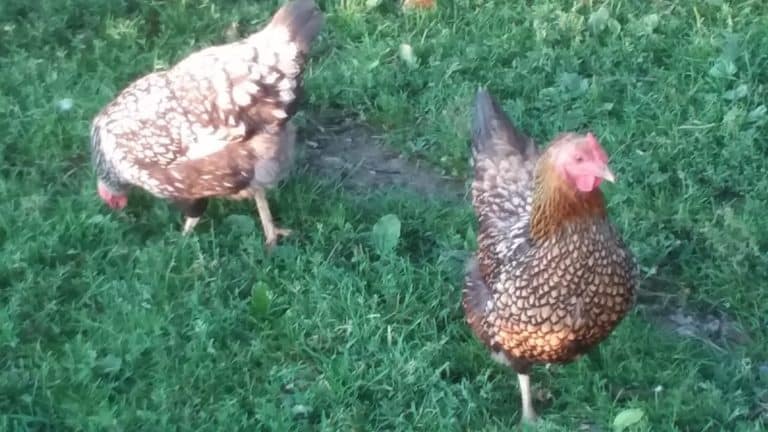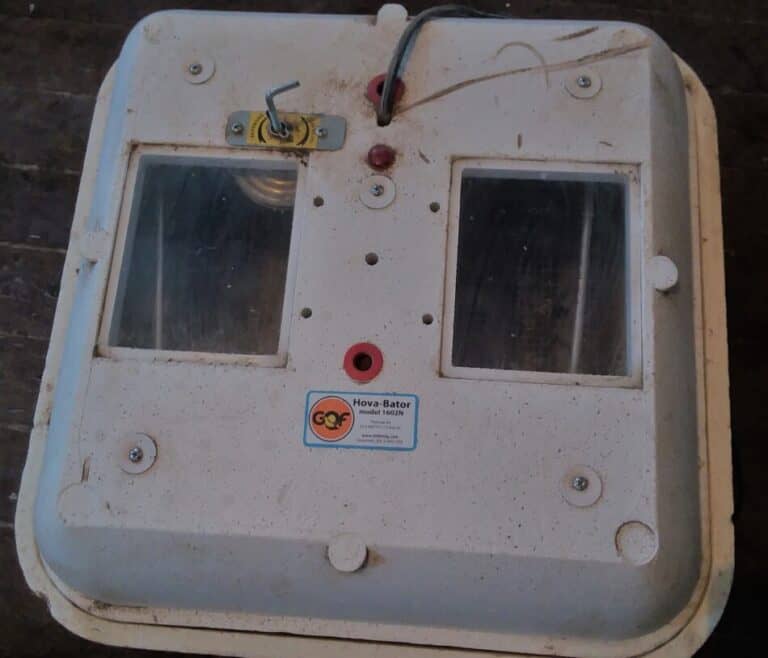Is Raising Meat Chickens (Broilers) Worth It?
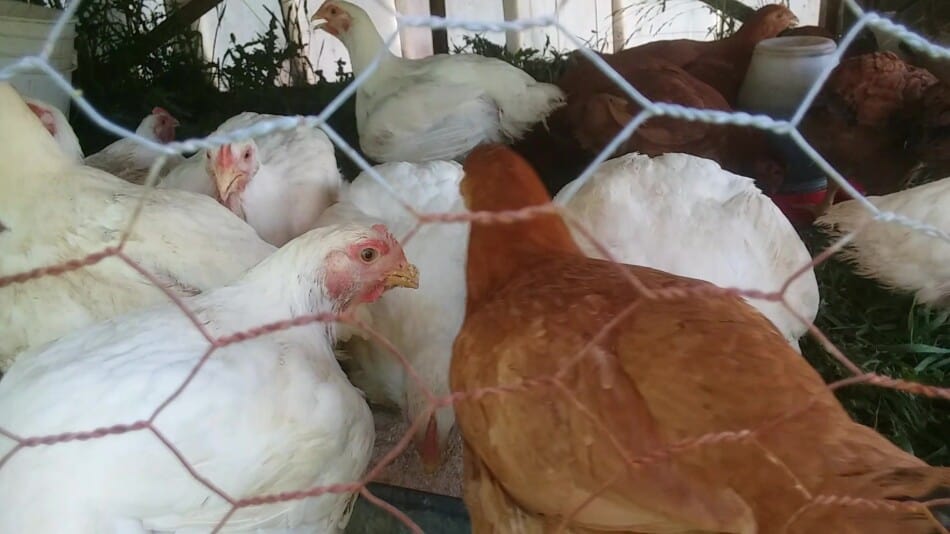
Thinking about raising your own meat chickens? Awesome! You’ll love the taste and nothing tops the “I raised this myself” feeling.
Now you’re wondering, how much will this awesome chicken cost me to raise and will they be worth it?
Home raised broilers will cost an average of $12.38, which is $3.53 per pound. This includes $2.78 for the chick, $6.10 for the broiler feed and $3.50 for processing costs.
Raising your own broilers is easily worth your time, effort and dollars.
It is hard to put into words the feelings of positivity and satisfaction that comes from knowing that you can provide for yourself.
Considering more than just broilers? Cheapest Meat Animal To Raise breaks down cost to raise animals by cost per pound of meat or read Meat For A Year to get you thinking about meat animal combinations to raise.
You’re not just raising your own meat. You’re raising great tasting, better than you can ever get at the store meat. Worth it? You bet!
| Cornish Cross Broiler chicks (the white broilers) | $2.78 each |
| Broiler feed, 22% | $6.10 |
| Cost of processing | $3.50 |
| Total cost (not including reusable items like feeders) | $12.38 |
| Cost per pound of meat (3.5 pound carcass) | $3.54 |
Home raised broilers taste amazing!
If you have never eaten a home raised broiler before, you are in for a treat! The flavor is better than great!
And you know exactly what it took to get that bird to your freezer! All of the industrial agriculture practices that you are not fond of do not have to be part of your diet any longer.
Once you learn to raise your own meat, you have freedom. Freedom to raise birds when you want, how you want and you are now free from spending your money to support things that you don’t believe in.
Beginners Guide To Raising 25 Broilers will go over the things first timers need to know about raising meat chickens.
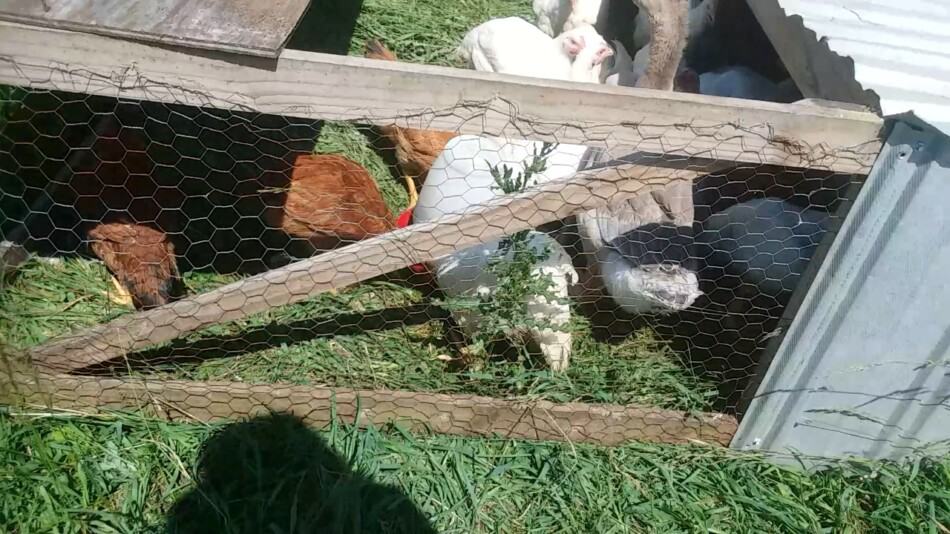
Broilers are easy to raise
The best part about broilers is that they are easy.
- You get them in the mail
- You can easily find the feed
- Equipment (like waterers and feeders) is small and easily purchased
- Broilers are a short term project, from 6-8 weeks start to finish!
Broilers allow you to raise some or all of your own meat and still have time to take the family out of town or on vacation.
You just need to do a bit of planning and schedule around the grow out periods.
Another positive here is the equipment you’ll get for the project is reusable and small enough to be easily stored in the corner of the garage.
Have fun raising your broilers, put everything away, then dust it off next year!
Broilers are a fun and fast beginner project.
Broilers are pretty easy going birds. If you have any bird raising experience, you know that sometimes even well behaved laying hens can be hard to catch.
Broilers are calm and easy to deal with, especially compared to other poultry. They are also easy to find.
Nearly any hatchery has broilers available throughout the year.
Cornish Cross Vs. Red Ranger Broilers will go over the differences between these two types of broilers that I noticed when I raised them together in the same batch.
Get the Cornish Cross (white) broilers
If you are new to broilers, you may be surprised to see a variety of broilers available in the hatchery catalog. There are the Cornish Cross (white) broilers and some colored broilers like Red Ranger, Kosher King, etc.
Try the white broilers first. For the beginner, the white broilers are the best choice since they are calmer and more beginner friendly.
There are differences between the broilers
I raised some Red Rangers and Cornish Rock (the white ones) together last summer. I liked the Cornish much better!
The Cornish are much faster to reach butchering weight and much easier to contain. They will also be easier to butcher, bigger bodied and white feathers. And, at least to me, the Cornish taste better!
The Red Rangers were faster to “get it” when moving the chicken tractor, but they were also the only ones to keep jumping out of the top!
I will say, the Red Rangers are meatier than they look. Even so, they take longer to reach butchering weight and I prefer the taste of the Cornish, so that’s what we raise.
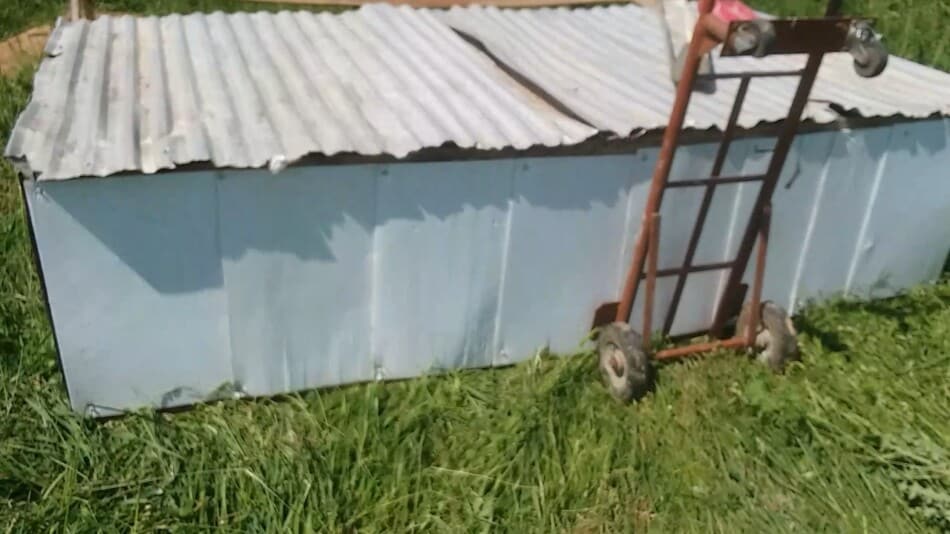
It takes 6 weeks to raise a broiler.
One of the best things about raising broilers is that they are so fast! You’ll be shocked at how much those chicks can grow in a few days.
The whole batch of broilers will be finished growing in 6 weeks, that’s smoking fast!
Looking for some great ideas on how to cook your broilers? My friend Abby has a great site filled with keto friendly recipes, try Easy Coconut Chicken or Cinnamon Butter Chicken Thighs to get you started!
For more meat, keep the bird for 8+ weeks
You can keep them to a higher weight, we always do, is you prefer a bigger bird. Be sure to have them processed by 9 weeks or they will start having problems keeping up with the high demands of their heavy body.
This is especially true in the heat. If it’s hot out, process sooner! Bigger birds have more trouble with heat than younger, lighter weight broilers.
Pick one or two of them up a few days after you get them. It’s crazy how much heavier they feel already.
If you just look at them, it’s hard to tell the difference, at least for me. Gently hold a few, you’ll feel the difference!

Broilers need special feed.
The feed for your broilers will be pretty easy to find, check your local farm store. Be sure to get meat bird or broiler feed (both the same thing, just different names), not regular chicken feeds.
The differences in formulation are substantial. Your broilers need the high test feed to grow their best.
Once your broilers grow a bit, you’ll be able to switch from Broiler Starter to Broiler Grower. The grower will be a bit lower in protein, which is appropriate for the now older birds and should cost less per bag.
We always switch to the grower at 2-3 weeks, but read your bag and do what the directions say for the feed you are using. Either way, always use broiler specific feed.
Do not feed an all purpose feed to broilers
It can be tempting to look over the selection of feeds and pick a lower protein feed, since they are cheaper. While some birds can do just fine on a lower protein feed, broilers are not one of them.
Trying to “save” here will cost you big in terms of health problems for your birds. Broilers are amazingly fast growers that need great nutrition to keep up with that smoking fast growth.
Broilers need a brooder for 3 weeks.
Sometimes the brooder part of raising broilers (or any young poultry), can be overlooked. When you get your broilers in the summer, you’ll still need to plan on them being in the brooder for three weeks.
Even if you don’t need much or any supplemental heat during the day, your broiler chicks still need to be cozy at night.
This is where pastured broilers can be confusing for a beginner. Yes, your broilers will be on pasture, after they come out of the brooder!
Setting up a brooder is pretty easy and once you get your set up figured out, you can use it repeatedly.
All of the things you need to buy can be found at most any store carrying hardware or you can order the brooder kit from the hatchery when you order your chicks.
Make your processing appointment first!
I know it’s exciting to have chicks ordered! Yes, now you are getting somewhere! But hold on a second, you have missed an important step!
Cost To Butcher Meat Chickens (with examples) shows you some pricing differences between processors, so you know what to expect if you decide to pay someone else to process your birds for you.
For home butchering, have all equipment before you get chicks.
I am seeing multiple people in online groups (and I’m not part of all that many groups!), that are saying their processing plans are going to fall through. For a first time broiler raiser, this is stressful, at best!
How Long Does It Take To Process A Chicken? goes over the times for each step of processing your birds.
How To Pluck A Chicken Without A Plucker shows you specifically how you can pretty easily hand pluck a few meat birds.
The situation I am recalling is a new broiler raiser having a plucker ordered for mid July, when the broiler need processed, but it is back ordered until mid September (true story)!
Those broilers won’t wait, they must be processed before 9 weeks! These folks are going to have to process their first batch of meat chickens without the plucker they had been counting on.
They can do it and so can you. (Actually, when we do just a few birds, we don’t bother with setting up the plucker.) But this isn’t the point, you ordered and paid for a plucker to make your life easier and now, you’re on your own.
The point to this story is, if you feed you need to have a plucker or any other equipment to do your processing, have it all at your house before you order the chicks! This will save you the stress of scrambling to find other options.

Order broilers for later in the year
The other thing that is not mentioned much is that you can raise broilers through out the year. If you want them to be on grass, you’ll need to get them in a period where your area has it, of course!
We like to raise broilers in the fall. When these birds are nearing full grown, it’s also cooler outside or at least less likely to be 95!
If your equipment won’t be available until later in the year, order your chicks for later, as well. Or you could plan to hand pluck. You have options.
Use the calendar. You have a large window of time to raise broilers. Don’t miss out because you think you have to start in the spring, you have a much larger window than that.
You will need 15 pounds of feed per bird.
Plan on feeding about 15 pounds of feed per broiler in order to get the birds to a live weight of 5 pounds each. If you prefer bigger birds, like we do, you’ll need to plan on a bit more feed per bird.
Having your broilers on pasture or getting other supplemental feeds, like garden scraps, will help reduce your feed usage some, but not eliminate it.
I always count on my birds eating 15 pounds each and then consider it a bonus if and when they need less!
The feed will cost $6.10.
Your broilers will cost $6.10 each to feed, that’s about $0.41 a pound. This is an average of the farm store priced feeds that I found ranging in price from $0.37 per pound to $0.46 per pound.
Be careful when you are comparing feed prices! I have noticed quite a few 40 pound bags out there. Nothing wrong with a 40 pound bag, unless you are comparing it to a 50 pound bag and not realizing the difference!
In order for you to do your own feed price comparisons you’ll need to figure up the price per pound of the feed. No worries, it’s easy.
Cost of the bag divided by the pounds in the bag=price per pound of feed
For example: a 40 pound bag of meat bird crumble is $14.99. Take $14.99 divided by 40 and you get $0.37 per pound of feed.
Feed prices vary with feed formulation
Feed price can be significantly higher, I saw $0.72 per pound for organic starter. Feed prices can also be much lower, a feed mill will have broiler feed for around $0.20 per pound.
You’ll have quite a few options regarding feed choice. I would go for the most recently made, since feeds start to lose their nutritional value as they sit.
It’s worth shopping around to see what is available in your area. Of course, you can get feed shipped in, but keep an eye on the costs! Shipping feed is pricey.
Processing fees are $3.50 per bird.
The current processing price in Ohio per bird is $3.50. You’ll need to find a processor close to you to see what they are charging.
The only place around here that will process your birds for you is super busy this year and finding a last minute appointment is tough.
Schedule your processing early.
See what the hatchery has available and what dates the processor has open and coordinate between them when ordering chicks. You’ll want to make sure you can get an appointment for your birds!
You can process your own broilers!
If you are willing to give it a try, butchering your own broilers is not hard. I’ll admit, the first few birds will be harder for you than any of the rest. This is just because you are new.
Once you get a few done, you’ll be able to start refining your process and be much more confident in what you are doing.
We process all of our birds and neither one of us grew up doing this kind of stuff. We learned, so can you!
It costs $3.54 per pound to raise your own meat chickens.
All I did here to get $3.54 per pound is to take the cost of the chick and feed costs plus the processing cost and divide by the pounds of meat (3.5 pounds) in the finished, freezer ready bird.
Don’t forget to add in the cost to get the broiler, for us each broiler chick is $2.78 at our local hatchery.
Here’s the math: $ 2.78+6.10+3.50=$12.38 divided by 3.5=$3.54 per pound
Obviously there are some variables here including feed costs, whether or not you process the chickens yourself, if your processor charges a different price, how big the broilers are when you process them, etc.
Not included: feeders, waterers, heat lamps, fencing, etc.
Another thing to remember here is that all of the things you needed to purchase to make this project work, like feeders, are not included in the price per pound either.
Also, suspiciously absent is your time. Don’t forget that if you take chickens somewhere else to process them, you’ll need to count that time, as well.
I know excluding the equipment and your time is frowned upon by some people.
Here’s why I leave both of those out: I’m figuring most people looking into raising broilers are first timers. The purpose is to have home raised meat, not create a side hustle (always an option for later, but not likely this round).
The first few times you raise broilers, you’ll waste some time doing things that you’ll learn you didn’t need to worry about. Or you might overlook something that causes you problems later, like cat proofing the brooder!

Beginners make mistakes and will improve as they go, it’s normal! To me, it’s not appropriate to give a time estimate, since you are new, or to tell you what your time is worth. Only you know that!
If you are raising broilers as a business, you bet those expenses are critical! Since your first few batches of broilers are for you, learn the process and get better at it, then start calculating times if it matters to you.
For the nearest processor to us, it is an hour down and back to drop off the birds then another trip to pick up, for a total of 4 hours driving time.
Admittedly, this is not a huge amount of time when you have already put in many hours to raise the birds, but it should be accounted for. Especially if you happen to live hours away from a processor, those travel hours can add up fast.
Compare cost to custom raised chicken in your area.
Be sure to use a valid comparison when you are running the numbers to see if raising your own broilers will be worth it to you.
Look up a local place that will be caring for the birds in the same way you plan to and will be feeding the same type of feed, non GMO, pasture raised, etc., that you will be feeding.
If you are at a loss to find something comparable, use Polyfaceyum.com. This is the site I use to compare prices when I am looking for reasonable numbers that are appropriately priced.
Do not use grocery store chicken prices.
Grocery store chicken prices are not the same, no matter what the label says. Do not use these birds as a comparison to your home raised chickens, this is an apples to oranges type of comparison.
Find something online or use the link above to get an idea of price.
For a much more detailed budget, read NC-Choices, NC Farm School Meat Chicken Cost Breakout. This is an extensive budget, with a few sets of numbers based on feed costs. Start with the feed costs closest to those of your area.
